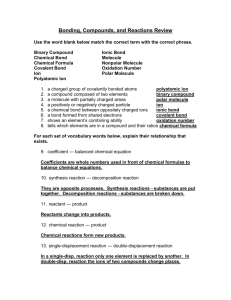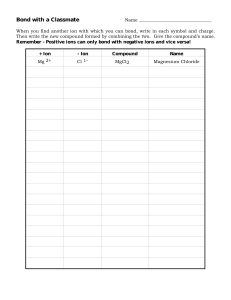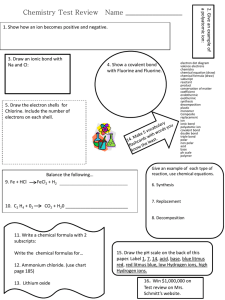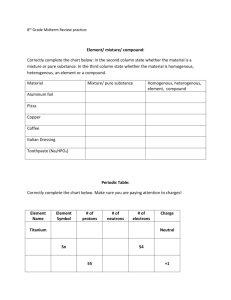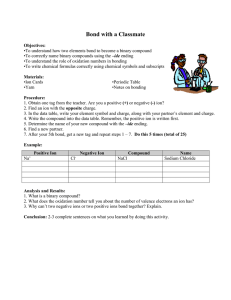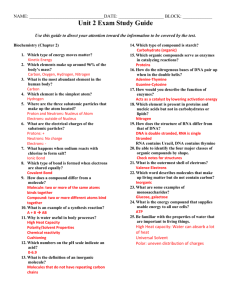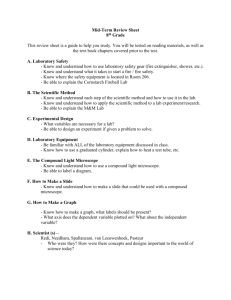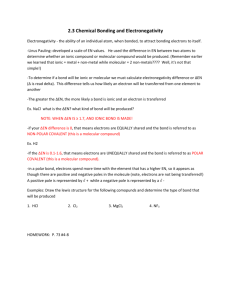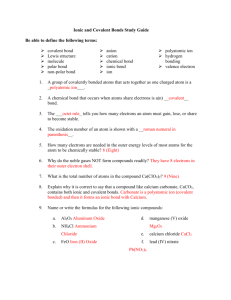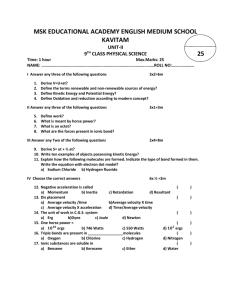Bonding, Compounds, and Reactions Review
advertisement
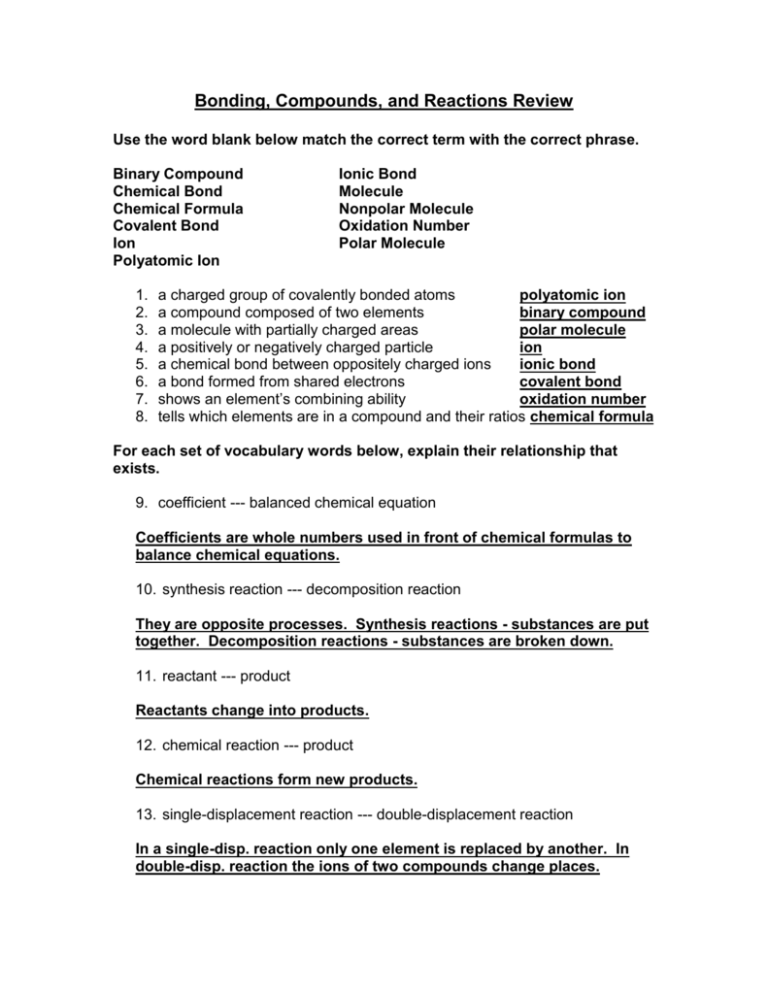
Bonding, Compounds, and Reactions Review Use the word blank below match the correct term with the correct phrase. Binary Compound Chemical Bond Chemical Formula Covalent Bond Ion Polyatomic Ion 1. 2. 3. 4. 5. 6. 7. 8. Ionic Bond Molecule Nonpolar Molecule Oxidation Number Polar Molecule a charged group of covalently bonded atoms polyatomic ion a compound composed of two elements binary compound a molecule with partially charged areas polar molecule a positively or negatively charged particle ion a chemical bond between oppositely charged ions ionic bond a bond formed from shared electrons covalent bond shows an element’s combining ability oxidation number tells which elements are in a compound and their ratios chemical formula For each set of vocabulary words below, explain their relationship that exists. 9. coefficient --- balanced chemical equation Coefficients are whole numbers used in front of chemical formulas to balance chemical equations. 10. synthesis reaction --- decomposition reaction They are opposite processes. Synthesis reactions - substances are put together. Decomposition reactions - substances are broken down. 11. reactant --- product Reactants change into products. 12. chemical reaction --- product Chemical reactions form new products. 13. single-displacement reaction --- double-displacement reaction In a single-disp. reaction only one element is replaced by another. In double-disp. reaction the ions of two compounds change places. Answer the following questions. 14. Which elements are least likely to react with other elements? Noble Gases 15. What is the name of CuO? Copper (II) oxide 16. How many electrons are in the outer energy level of Group 17 elements? 7 17. Which of the following is a binary ionic compound? a. O2 b. NaF c. H2SO4 d. Cu(NO3)2 18. What is the charge of an atom if it has gained 3 electrons? -3 19. Which of these is an example of a covalent compound? a. Sodium chloride b. Calcium fluoride c. Calcium chloride d. Sulfur dioxide 20. Oxygen gas is always written as O2 in chemical equations. What term is used to describe the “2” is this formula? subscript 21. How do you indicate that a substance in an equation is a solid? (s) 22. What term is used to describe the “4” in the expression 4 Ca(NO 3)2? coefficient 23. How do you show that a substance is dissolved in water when writing an equation? (aq)
